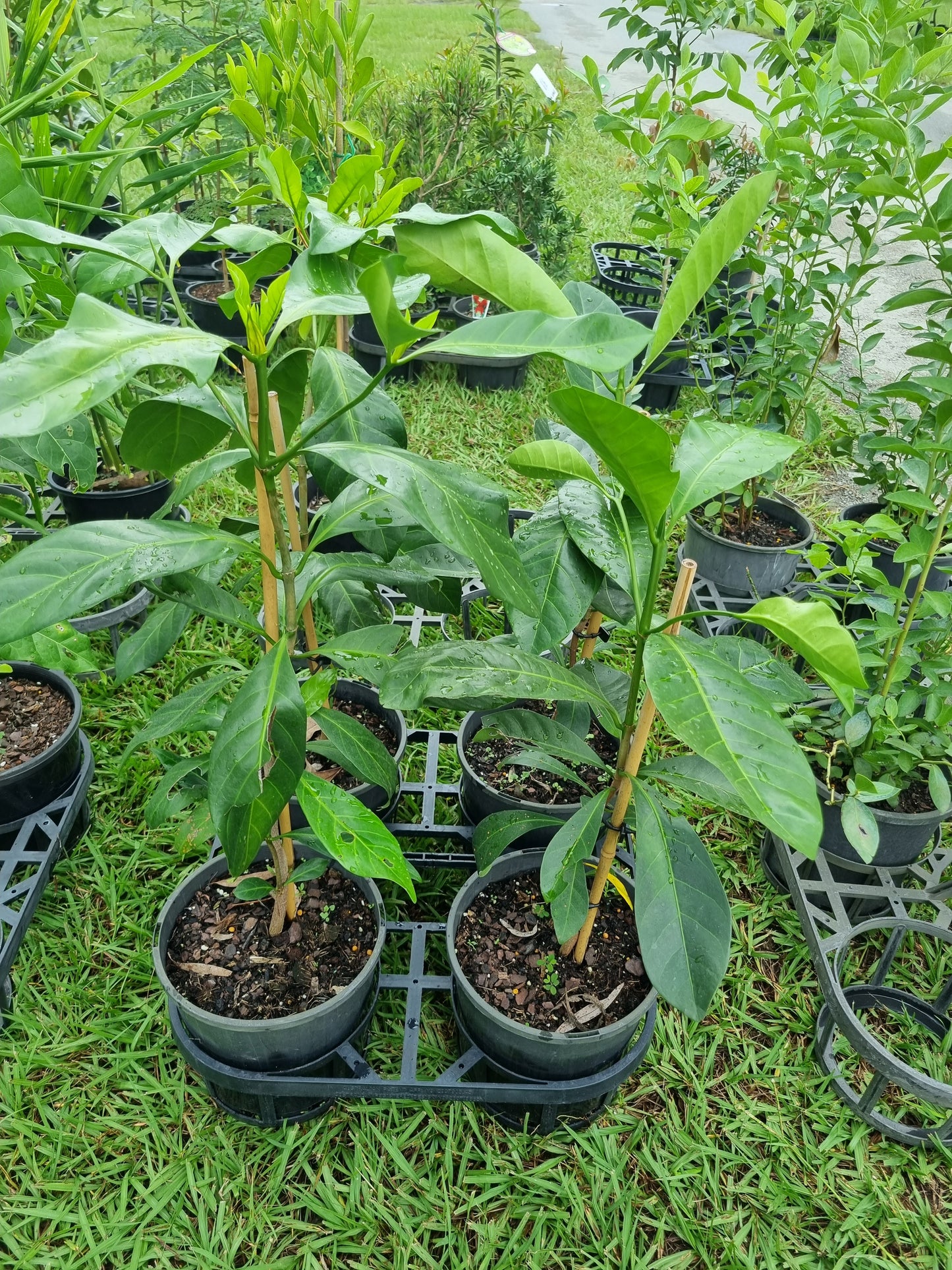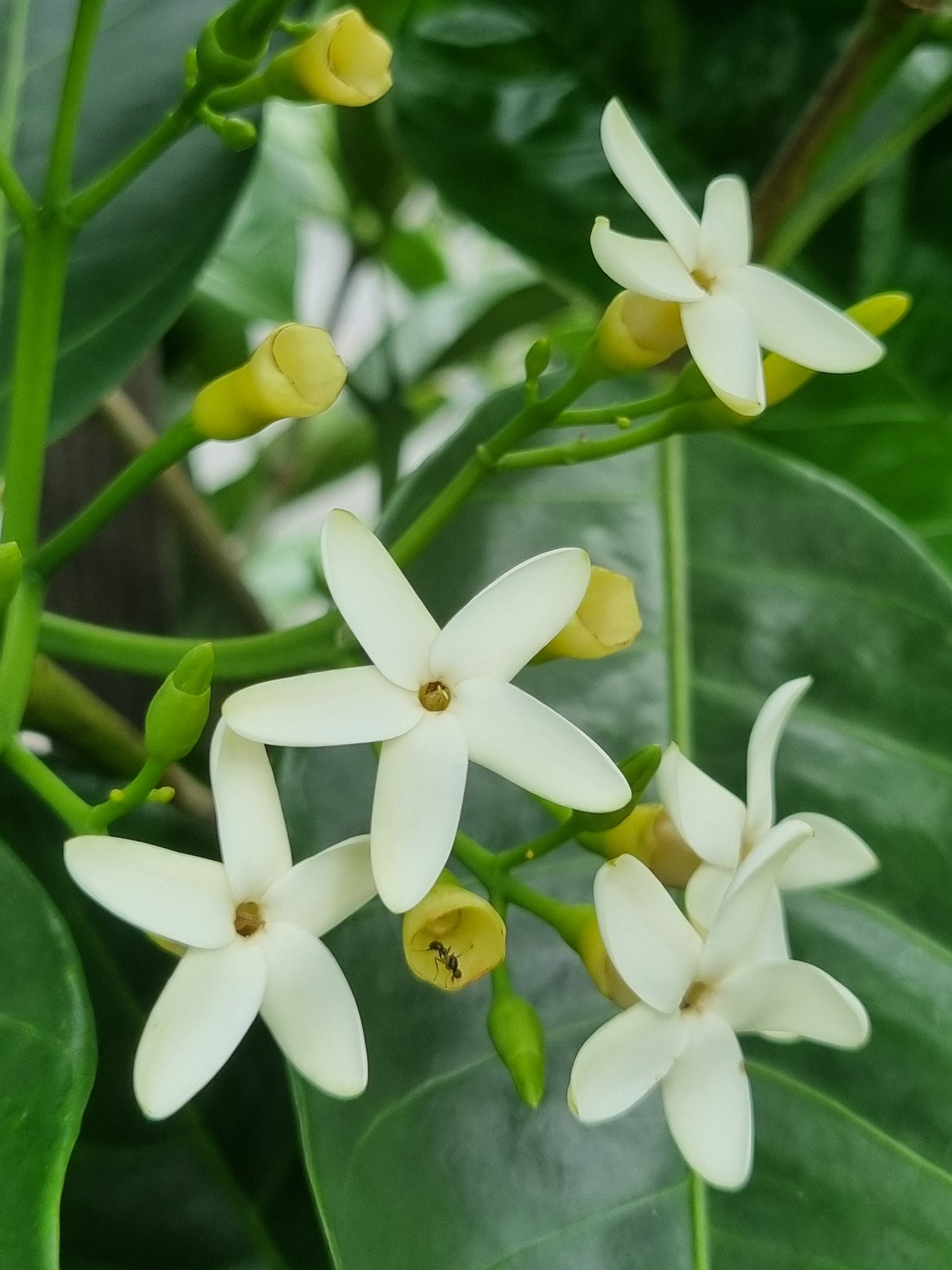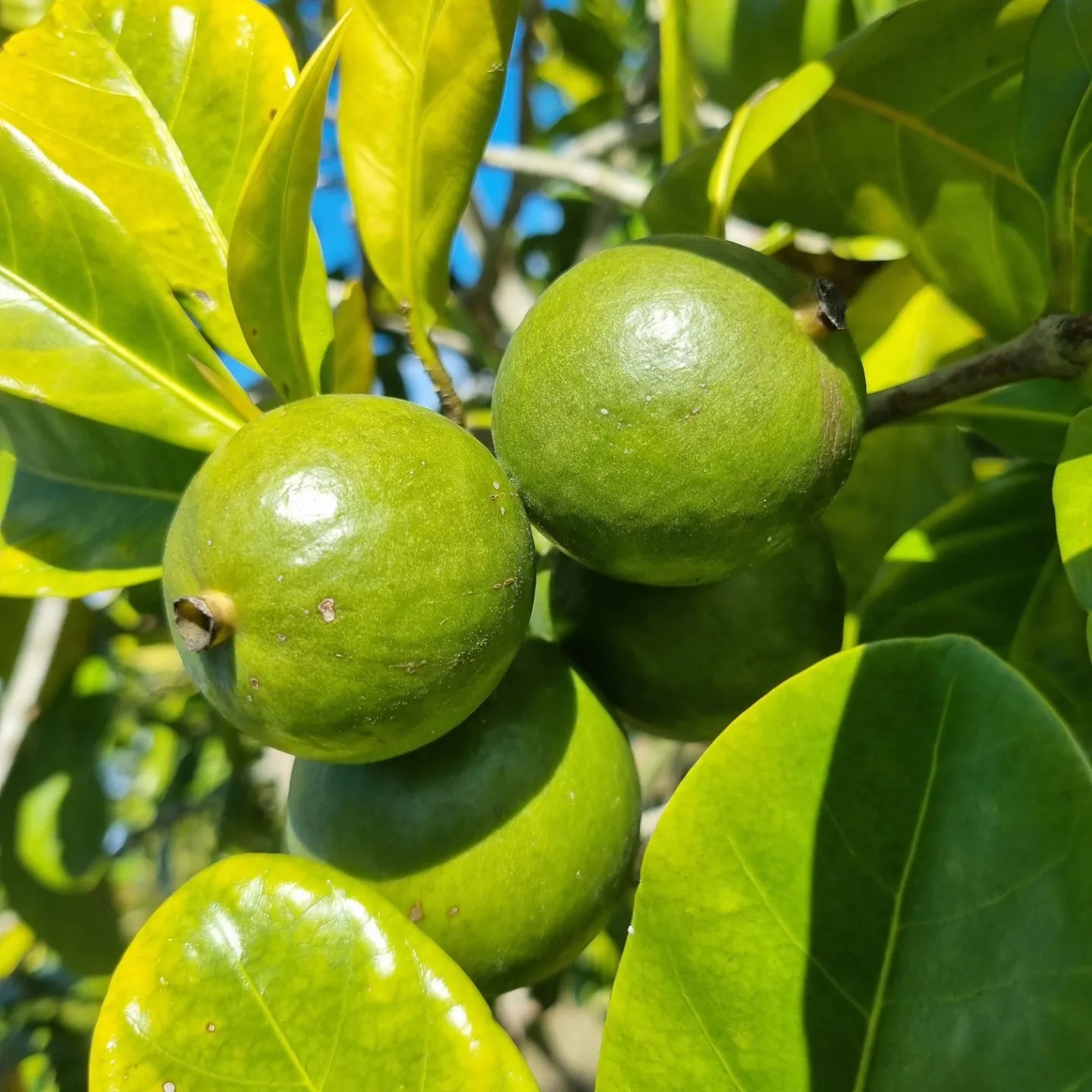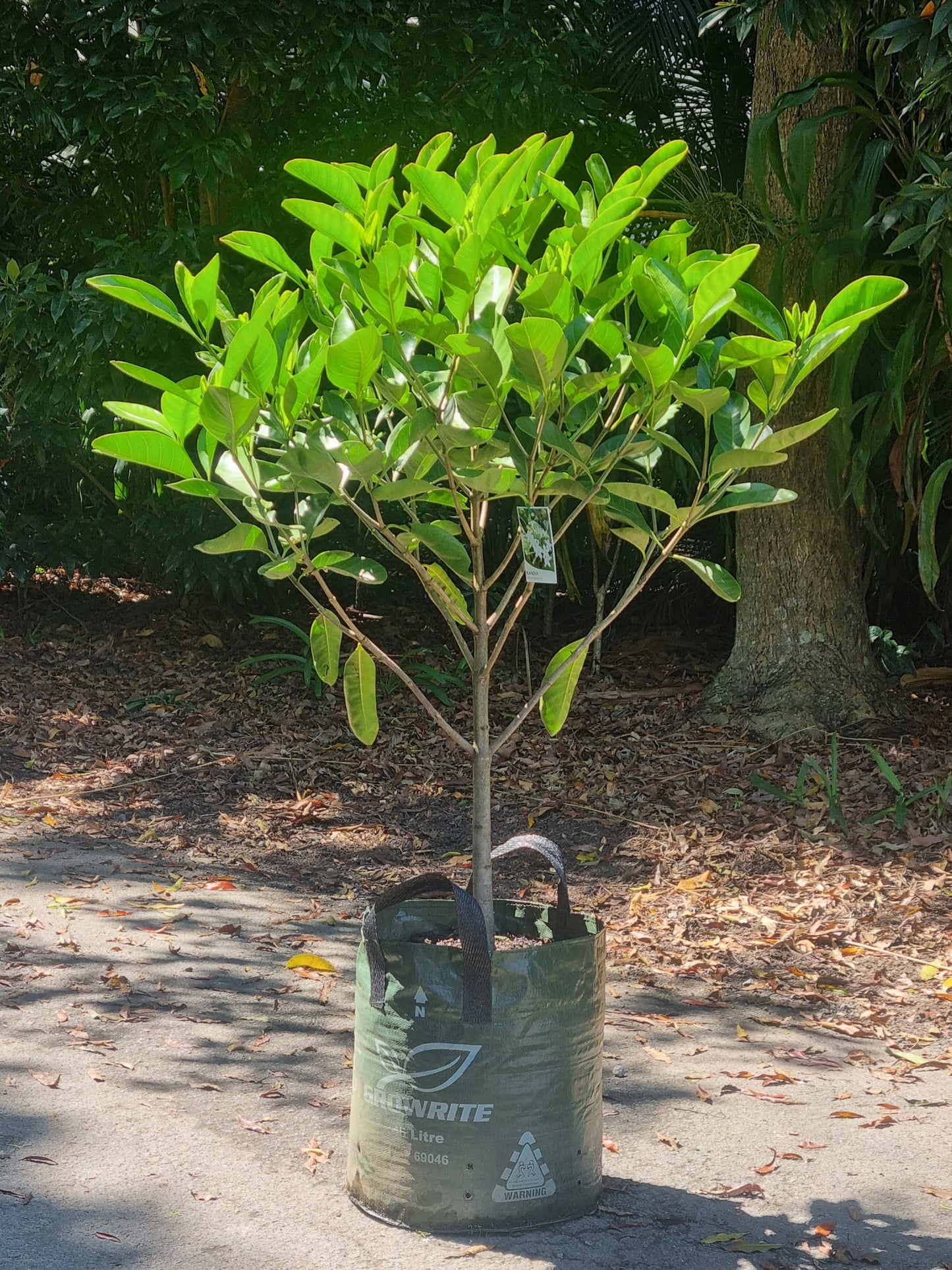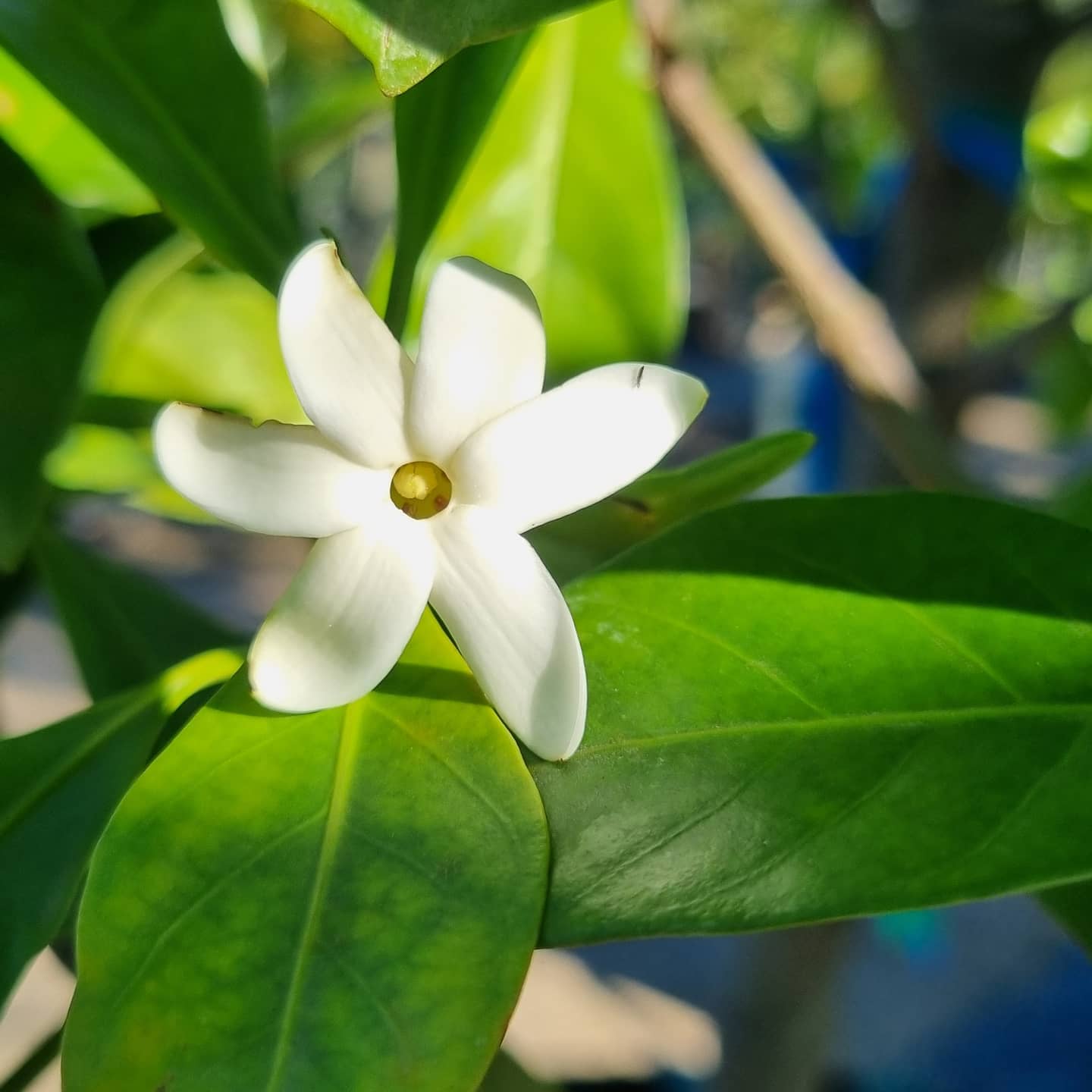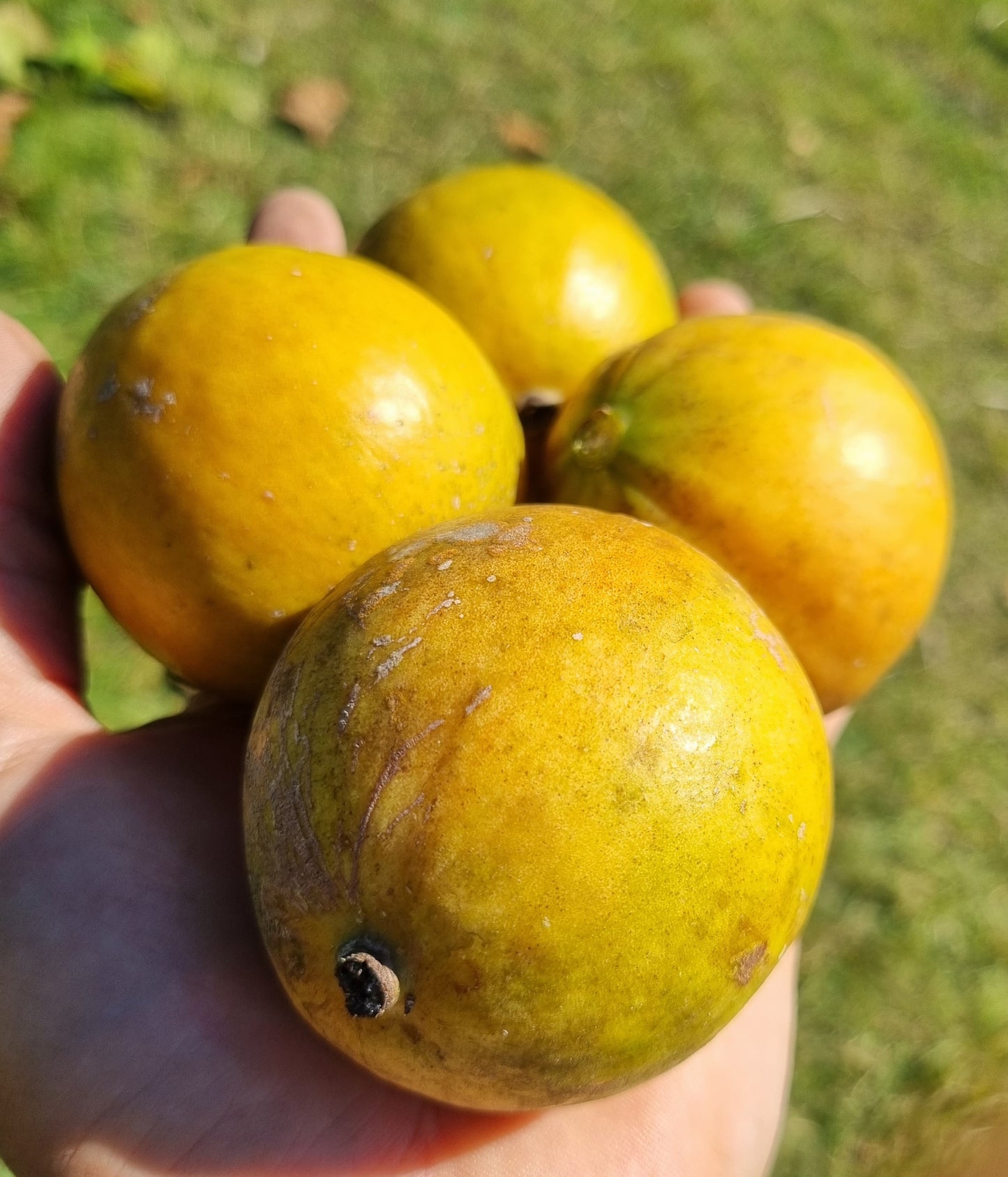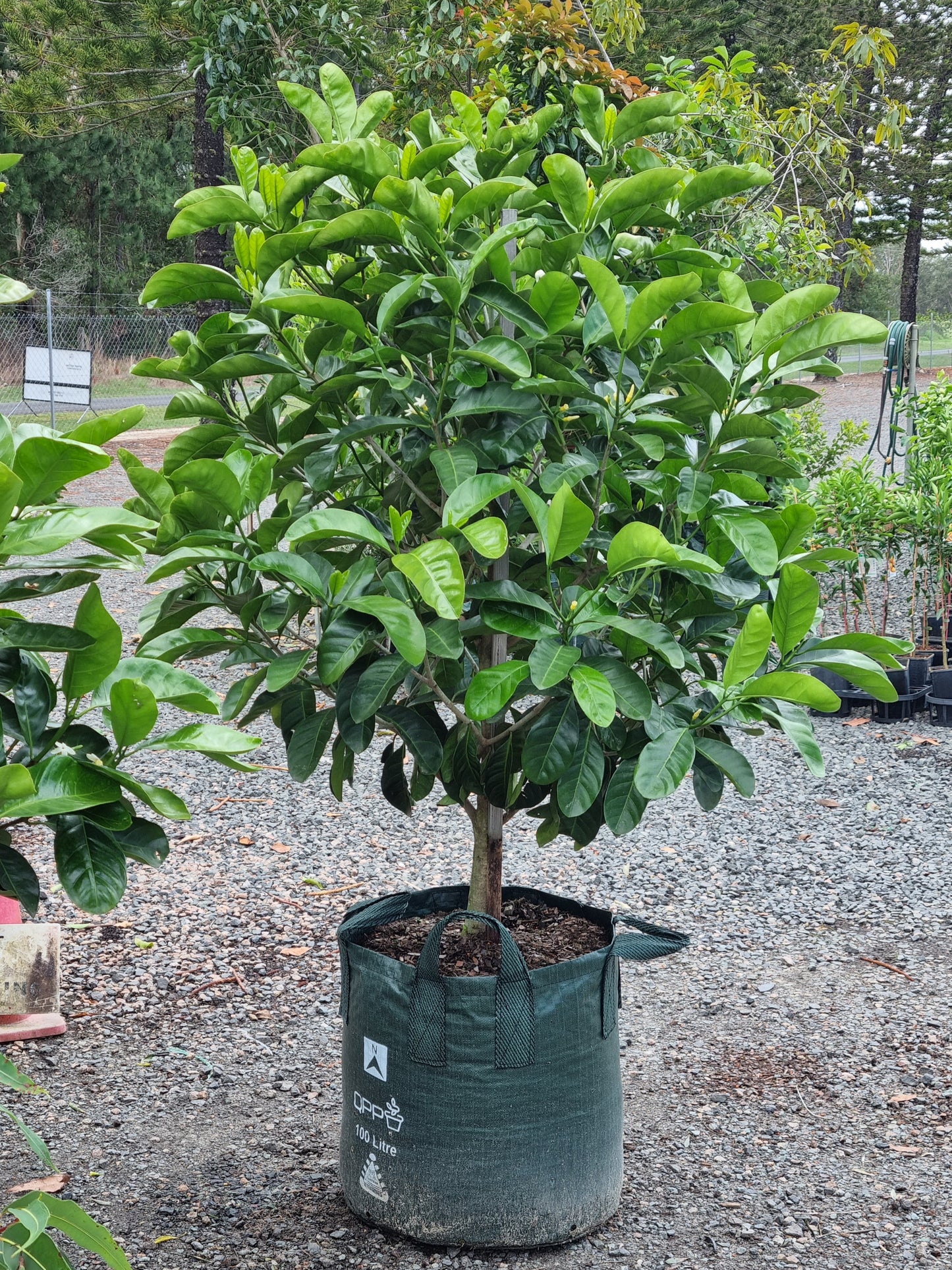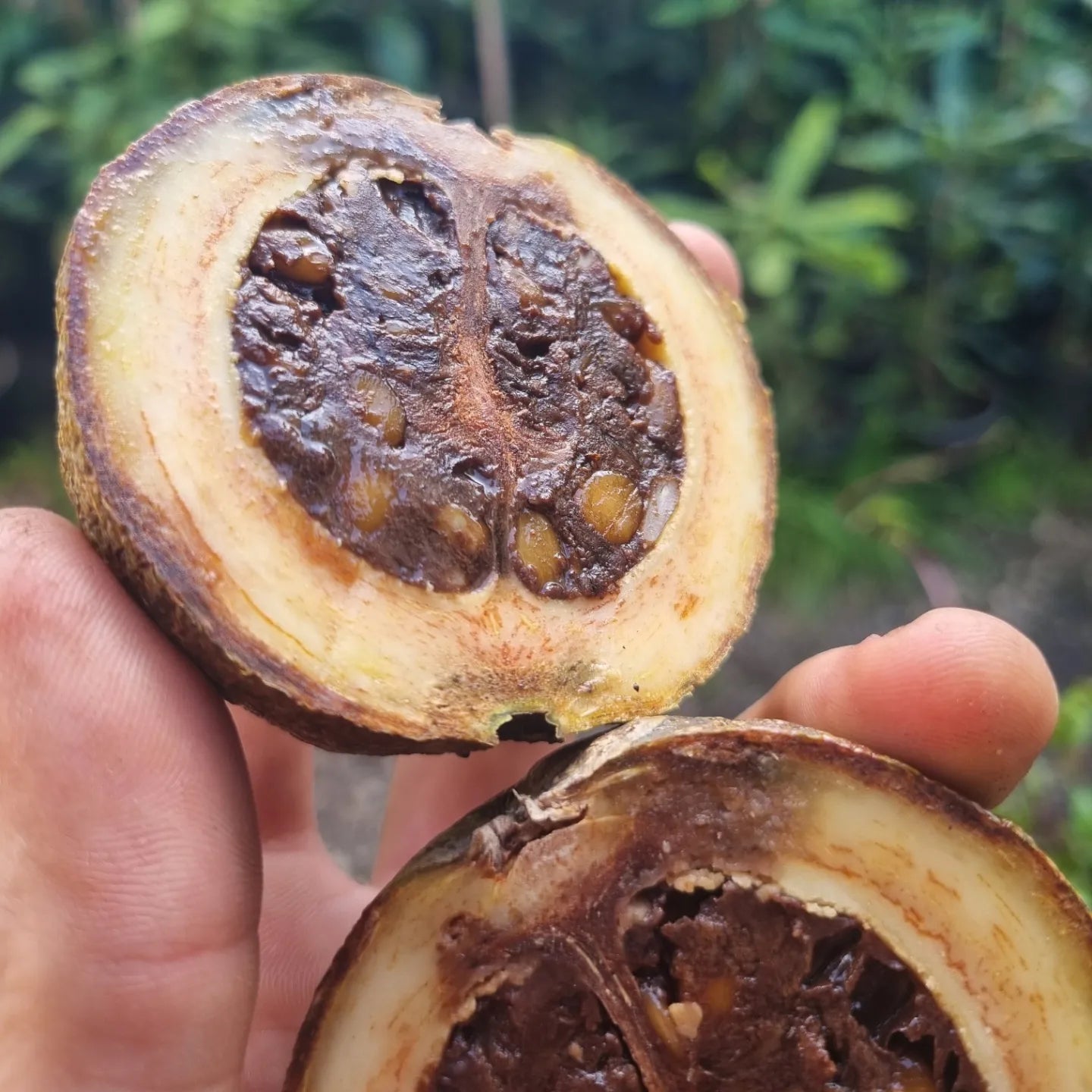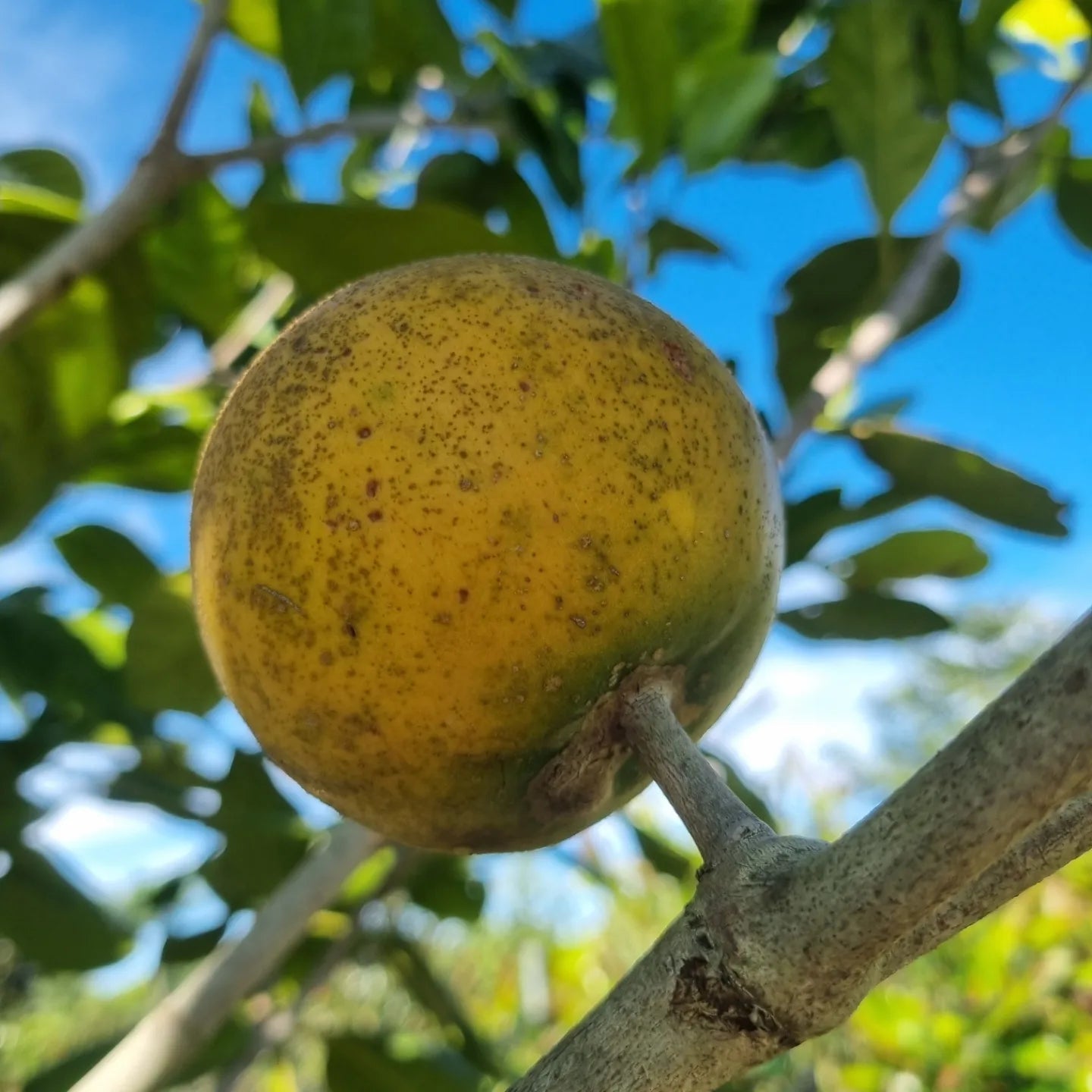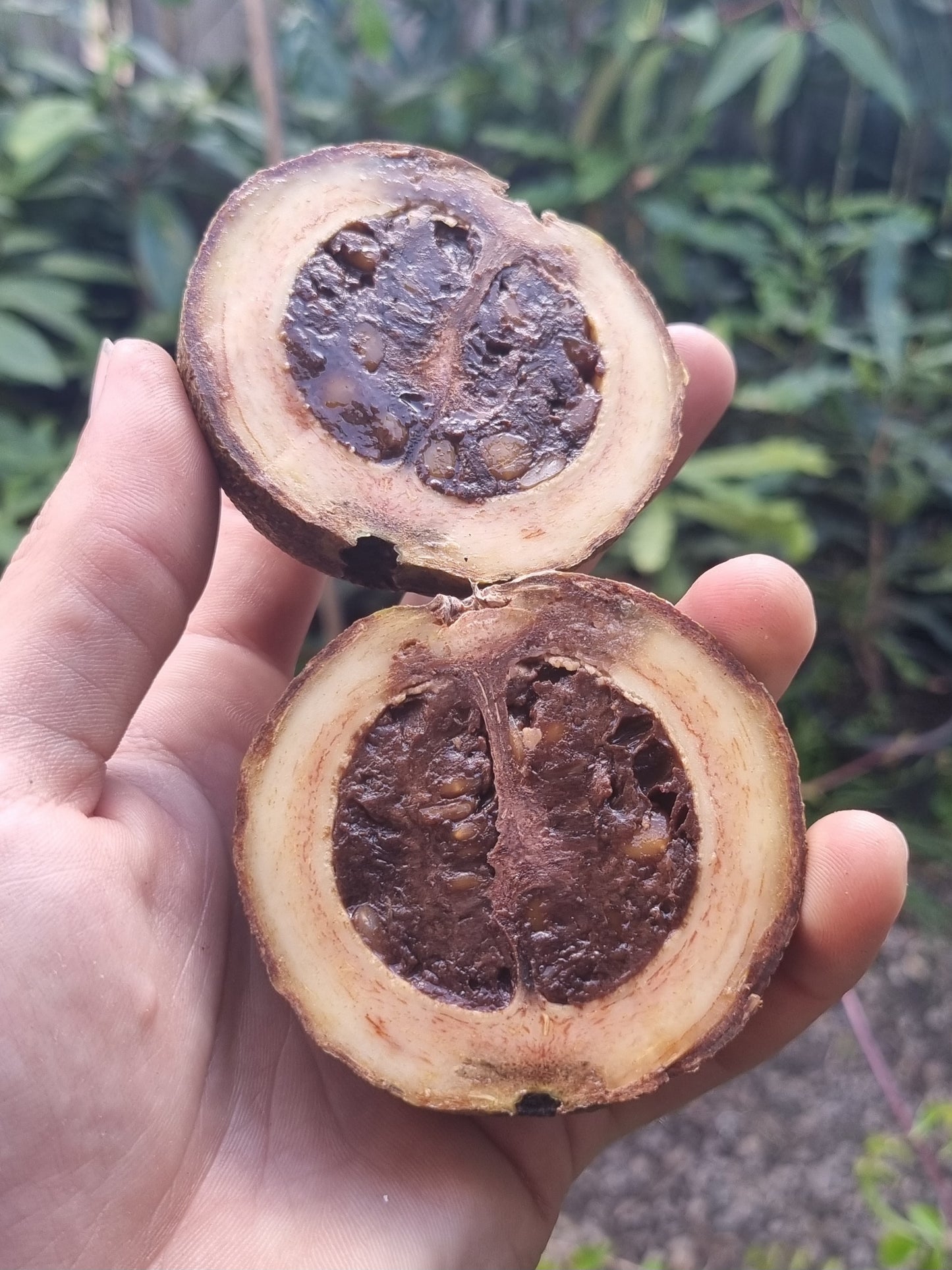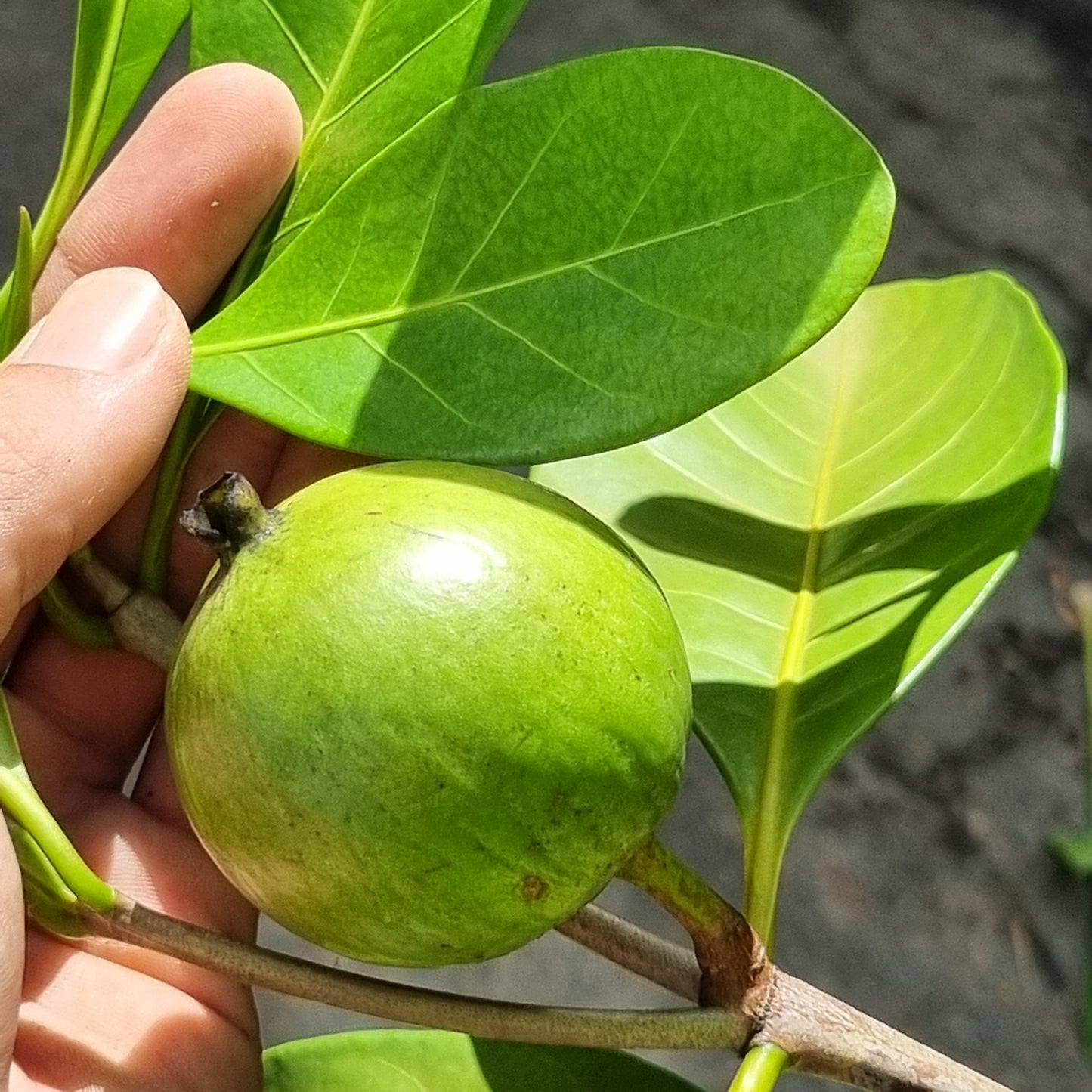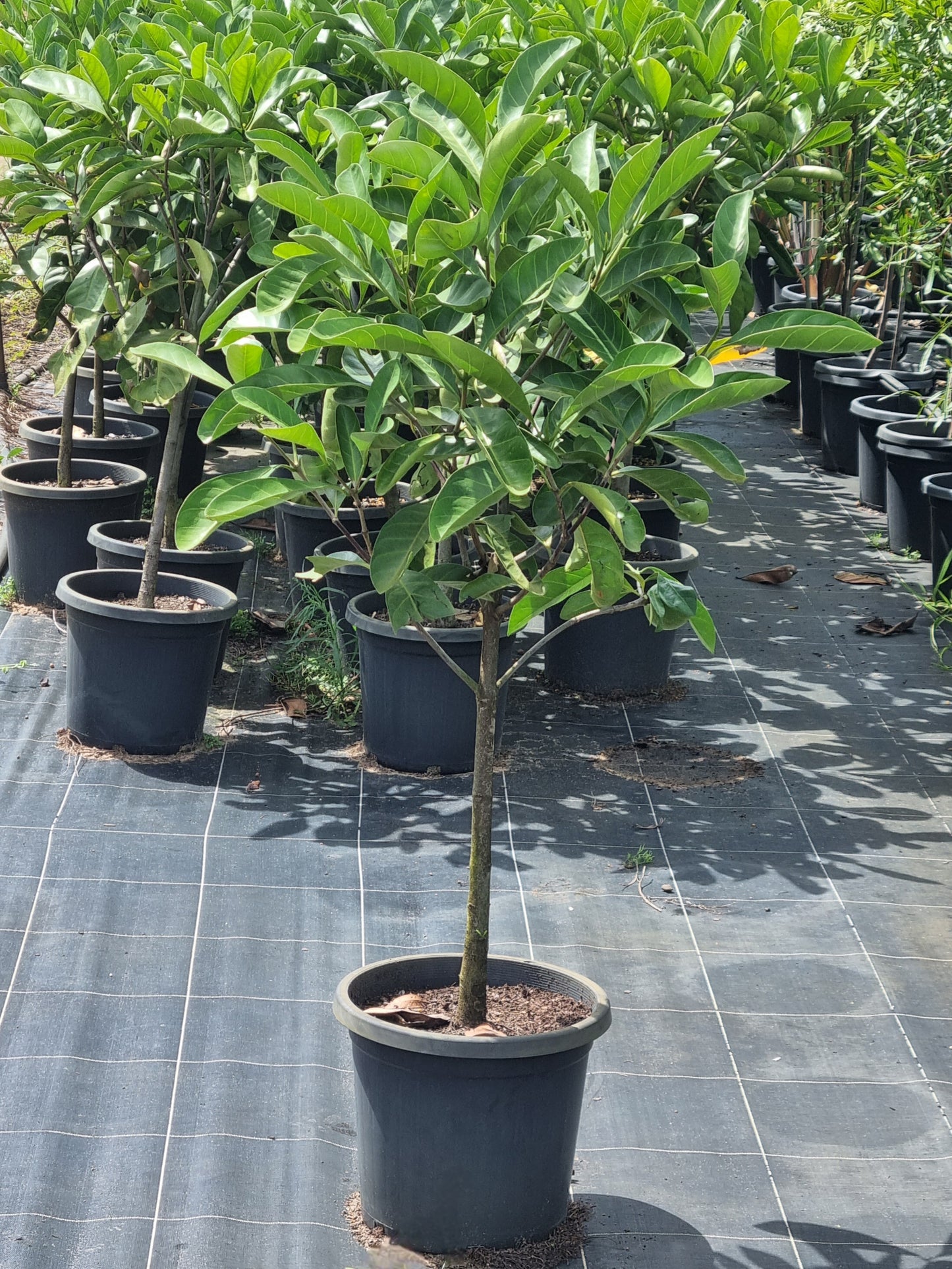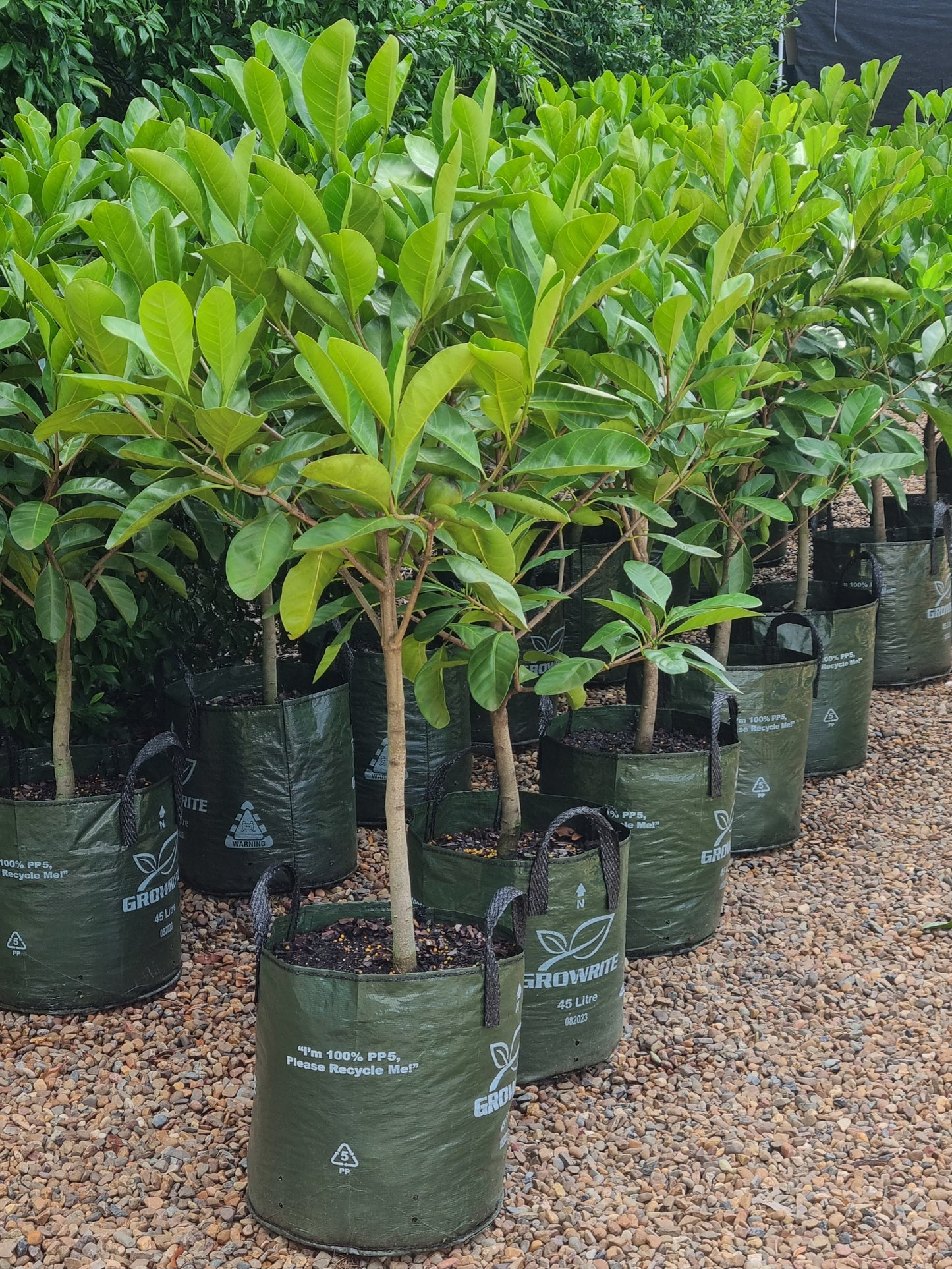Delivertree
Native Gardenia - Atractocarpus fitzalanii
Native Gardenia - Atractocarpus fitzalanii
Couldn't load pickup availability
The Native Gardenia is a small evergreen tree from the rainforests of northeast Queensland, admired for its deep green foliage, fragrant flowers, and edible fruit. It is a versatile and attractive choice for backyard gardens, streetscapes, and screening. The cream-colored, gardenia-scented flowers appear in late spring, followed by yellow-brown edible fruit that ripens from April to June. In its natural rainforest environment, it grows along riverbanks, steep slopes, and rocky outcrops, often thriving right next to the water. Though adaptable to various conditions, it grows best in full sun to part shade, with shade causing a slower, taller growth habit. Proper pruning is recommended in the early years, as heavy fruiting can weigh down young branches.
- Native to: Rainforests of northeast Queensland
- Habitat: Common along rivers, streams, steep slopes, rocky outcrops, and rainforest edges
- Height: 3-10 meters in its natural habitat, typically 4-6 meters in cultivation
- Width: 3-5 meters wide, forming a dense, rounded canopy
- Foliage: Deep green, glossy, evergreen leaves
- Flowers: Abundant cream-colored flowers in late spring with a strong gardenia-like fragrance
- Fruiting Season: Fruit ripens from April to June, edible when soft and turning yellow-brown
- Growth Habit: Naturally symmetrical with a compact, rounded form, suitable for screening or as a feature tree
- Position: Can grow in full sun to full shade (slower, taller growth in full shade, best in full sun to part shade)
- Watering: Regular watering required during establishment; drought-tolerant once mature
- Fertilizer: Benefits from an all-purpose or native fertilizer applied during the growing season
- Etymology: Atractocarpus comes from the Greek atracto- (spindle) and carpus (fruit), referring to the shape of the fruit. Fitzalanii honors Eugene Fitzalan, an Australian botanist.
Detailed Description:
The Native Gardenia (Atractocarpus fitzalanii) is a stunning small tree well suited for tropical and subtropical landscapes. It is widely valued for its lush, evergreen foliage, intensely fragrant flowers, and bush tucker fruit. Originating from northeast Queensland’s rainforests, it is often found growing along rivers, streams, and rocky outcrops, sometimes establishing itself in the cracks of rocks or on steep slopes near water sources. Its ability to thrive in challenging, moisture-rich environments makes it an excellent choice for home gardens and public landscapes.
At the end of spring, the tree produces an abundance of creamy-white flowers with a gardenia-like scent. These flowers attract bees, butterflies, and other pollinators, contributing to a biodiverse garden. As the season progresses, edible fruit begins to develop, maturing from green to yellow-brown between April and June.
The fruit is edible and highly regarded as a native bush tucker. When fully ripe and soft, it has a very sweet, coconut-like flavor, sometimes compared to Mangosteen fruit. The pulp is mildly aromatic and juicy, while the seeds can be eaten raw or used in jams and preserves. The fruit is a favorite among native birds and other wildlife, making the tree an excellent ecological addition to the landscape.
Growth and Maintenance
Native Gardenia is an adaptable and resilient tree, thriving in full sun to full shade. In forest or shaded conditions, it will grow taller and slower, while in full sun to part shade, it maintains a more compact, rounded shape. It prefers moist, well-drained soil and benefits from regular watering during establishment. Once mature, it is drought-tolerant but will perform best with occasional deep watering during dry periods.
Pruning is essential for maintaining structure and strength, especially during the early years when branches can be weighed down by fruit.
- Tree Form: Selectively prune for symmetry and remove any redundant branches that cross over or grow towards the trunk. Encourage strong, well-spaced lateral branches at 1.2-1.8 meters (4-6 feet) above the ground.
- Managing Suckers: Water shoots or suckers may emerge from the base of the trunk, growing at a 30-45 degree angle. These should be removed every few months to preserve the tree’s strength and direct energy into upward growth.
- Fruit Thinning: For the first 3-4 years, it is recommended to remove most of the developing fruit, as the weight can cause branch breakage. However, if the branches appear strong, the fruit can be thinned rather than entirely removed, allowing for a small harvest while reducing strain on the tree.
- Screening: While Native Gardenia is often used for screening, hedging methods are not recommended. Instead, selectively prune to maintain an even, symmetrical shape while allowing natural bushiness.
- Topiary: Can be shaped into a more defined tree form by gradually removing lower branches in proportion to its growth. For best results, crown the tree at the desired height and maintain lateral growth through occasional trimming.
Container Growing
Native Gardenia can flourish in large containers when properly maintained. If growing in a container of at least 100L, it should be kept at a manageable height of 2-3 meters with regular pruning and fertilizing every 6-12 months. Ensure the soil remains moist but well-drained, and position the container in a sunny to partly shaded area. Container-grown specimens require frequent watering, especially in warmer months.
Common Uses
- Feature tree: Perfect for gardens and streetscapes, providing year-round beauty
- Screening tree: Provides privacy when pruned selectively
- Wildlife gardens: Supports nectar-feeding insects and fruit-eating birds
- Bush tucker gardens: Produces edible fruit with a unique coconut-like flavor
- Large containers: Thrives in pots with proper care, adding ornamental value to patios and balconies
Planting Benefits
- Visual appeal: Glossy green foliage and creamy white, fragrant flowers enhance garden aesthetics
- Wildlife attraction: Flowers attract pollinators, and ripe fruit provides food for native birds
- Edible fruit: A delicious bush tucker option, offering a sweet coconut-like flavor
- Shade and wind protection: Forms a dense canopy, providing shelter in warm climates
- Adaptability: Grows in full sun to full shade and thrives in coastal and rainforest settings
- Low maintenance: Once established, requires minimal care aside from occasional pruning and watering
Native Gardenia is a stunning, low-maintenance tree that brings year-round beauty, fragrance, and edible rewards to gardens. With proper care, it will develop into a long-lasting ornamental feature, offering both practical and ecological benefits in any landscape.
Share
